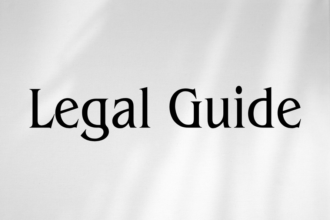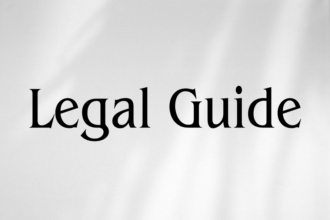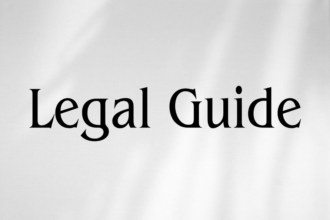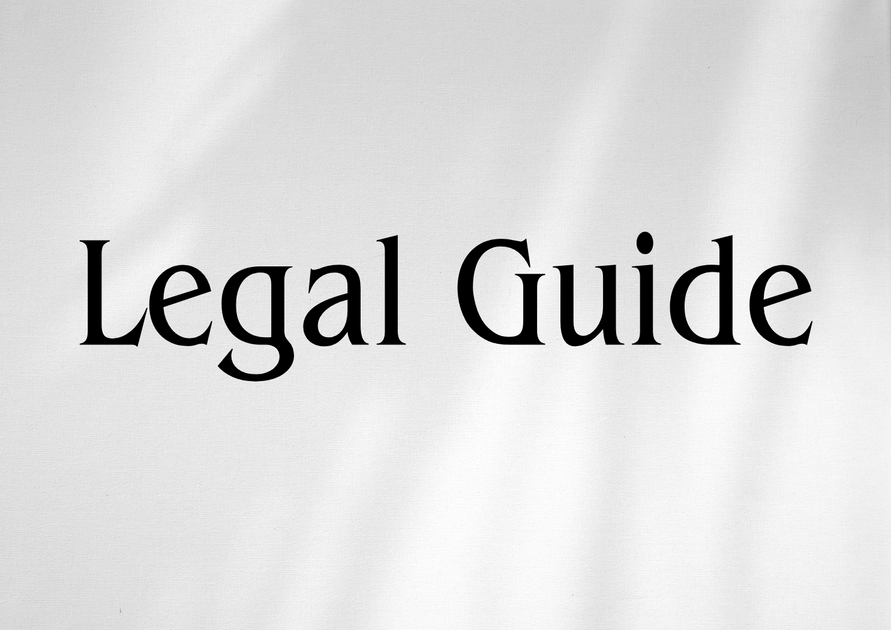Introduction
The United Arab Emirates stands as one of the premier aviation hubs globally, setting benchmarks in air transport, logistics, and related industries. From the exponential growth of Emirates and Etihad Airways to the rise of Dubai International Airport as a top global transit point, aviation is a central pillar of the UAE’s economic vision. In recent years, the regulatory landscape governing this sector has evolved rapidly, driven by technological advances, international safety standards, and the UAE Government’s commitment to sustainable development and innovation.
This article provides a comprehensive, consultancy-level analysis of the evolution of aviation regulations in the UAE, aligned with key legal updates for 2025 and practical compliance strategies. It is tailored for business leaders, in-house legal teams, HR managers, and executives navigating the complexities of UAE aviation law, as well as international investors and operators seeking clarity on the latest compliance requirements.
In light of significant federal decrees, regulatory reforms, and new compliance mandates issued in the past three years, understanding these changes is no longer optional but essential for business continuity, risk mitigation, and strategic growth within the aviation sector.
Table of Contents
- Regulatory Overview: Historical and Legal Foundations
- Major Regulatory Developments and Updates in UAE Aviation Law
- Regulatory Structure and Enforcement Mechanisms
- Comparison: Pre-Reform vs. Current Regulatory Framework
- Practical Application: Case Studies and Impact Analysis
- Risks of Non-Compliance and Strategic Compliance Pathways
- Emerging Trends and the Future of UAE Aviation Regulation
- Conclusion: Strategic Outlook and Best Practices
Regulatory Overview: Historical and Legal Foundations
Origins of UAE Aviation Law
The UAE’s approach to aviation regulation has always mirrored its strategic vision for leadership in global aviation. Federal Law No. 20 of 1991 (Civil Aviation Law), as amended, forms the backbone of civil aviation regulation. This law established the key regulatory powers, safety standards, and oversight mechanisms that govern civil aviation operations across the Emirates.
Key regulatory authorities were subsequently created, most notably:
- General Civil Aviation Authority (GCAA): Provided for by Cabinet Resolution No. 2 of 1996, the GCAA is tasked with implementing federal aviation law, managing licensing, safety inspections, and airspace regulation at the national level.
- Dubai Civil Aviation Authority (DCAA) and Abu Dhabi Department of Transport: Handle emirate-specific aviation matters within the framework of federal regulations.
The UAE’s regulatory framework closely aligns with international standards, particularly those set by the International Civil Aviation Organization (ICAO), to ensure safety, security, and efficiency in its airspace and airports.
Alignment with International Standards
The UAE was quick to accede to major international treaties, including the Chicago Convention of 1944, which laid the groundwork for modern global aviation law. Compliance with ICAO Annexes, European Aviation Safety Agency (EASA) benchmarks, and IATA operational safety standards is now embedded in local regulatory practice.
Major Regulatory Developments and Updates in UAE Aviation Law
2022-2025: Accelerated Legal Reforms
Recent years have witnessed a historical surge in legislative activity aimed at supporting innovation, market resilience, and post-pandemic recovery within aviation. Key legislative milestones include:
- Federal Decree-Law No. 8 of 2022: Introduced significant amendments to the Civil Aviation Law, focusing on enhanced safety protocols, digital licensing and registration, and expanded authority for sanctions and penalties.
- Cabinet Resolution No. 40 of 2023: Regulates unmanned aerial vehicles (UAVs/Drones), emphasizing registration, operational authorization, and data protection requirements.
- Ministerial Directives 2024: Set forth mandatory sustainability disclosures and environmental compliance standards for airport operations and airlines.
These reforms collectively address critical industry pain points: safety management, rapid digitalization, cybersecurity, and environmental stewardship.
Key Focus Areas in New Regulations
- Safety Management Systems (SMS): Operators are now required to implement comprehensive, data-driven SMS complying with ICAO Annex 19, overseen by the GCAA.
- Ramp-Up of Licensing and Training Standards: Enhanced pilot, crew, and maintenance engineer licensing, including digital certification and ongoing competency requirements.
- Drone Regulation: Strict limits on drone operations near airports and sensitive infrastructure, with mandatory registration and insurance.
- Cybersecurity Protocols: New obligations for airlines and airports to secure data and operational technology against cyber threats, under GCAA oversight.
- Environmental Compliance: Introduction of mandatory emission reporting, “green airport” guidelines, and incentives for low-carbon technologies.
These reforms are implemented via detailed executive regulations and technical guidance from the GCAA, supplemented by emirate-specific rules harmonized with federal law.
Regulatory Structure and Enforcement Mechanisms
Role and Powers of the GCAA
The GCAA wields significant regulatory and enforcement authority, as defined by Cabinet Resolution No. 2 of 1996 and updated by subsequent decrees. Its responsibilities include:
- Issuing and revoking operating licenses
- Conducting safety audits and accident investigations
- Ensuring compliance with airworthiness standards
- Proposing updates to technical and security regulations
Interaction Between Federal and Local Authorities
While the GCAA is the supreme federal body for aviation, each emirate retains jurisdiction over certain operational aspects (e.g., airport management, zoning, noise control). Federal law establishes primacy in air navigation safety, security intelligence, customs, and international agreements.
Enforcement Protocols and Penalties
Enforcement mechanisms under Federal Decree-Law No. 8 of 2022 include:
- Administrative penalties (fines, suspensions, and mandatory remediation)
- Criminal liability for gross breaches, endangerment, or disobedience of no-fly zones
- Mandatory reporting of incidents and operational breaches
Visual Suggestion: Insert a penalty comparison chart showing the escalation of penalties under pre-2022 and post-2022 law.
Comparison: Pre-Reform vs. Current Regulatory Framework
Key Changes at a Glance
| Area | Pre-2022 Framework | 2022–2025 Updated Framework |
|---|---|---|
| Operator Licensing | Manual application, periodic review, limited digital tools | Fully digitalized e-licensing, real-time oversight, stricter review |
| Pilot & Crew Certification | Basic periodic revalidation | Ongoing competency checks, digital reporting, advanced training |
| Drone Regulation | Permits on case-by-case basis, limited technical standards | Mandatory registration, insurance, defined technical/safety requirements |
| Environmental Reporting | Voluntary initiatives, ad hoc guidelines | Compulsory disclosure, emission tracking, green airport standards |
| Enforcement & Penalties | Fixed fines, rare license suspensions | Escalated penalties, criminal liability, remedial orders |
A closer analysis reveals that regulatory reforms have created a proactive, technology-driven, and risk-focused compliance environment, compelling operators to adopt far more comprehensive and dynamic safety and risk management systems.
Practical Application: Case Studies and Impact Analysis
Case Study 1: Airline Operational Compliance Post-2022
Scenario: An established UAE-based airline must renew its Air Operator’s Certificate (AOC) in 2024. Under the new framework, this process is now entirely digitalized and contingent upon demonstrable compliance across multiple domains: operational safety, crew certifications, cyber-resilience, and emission reporting.
Legal Advisory Notes:
- Operator must maintain a continuously updated digital compliance record accessible by the GCAA at all times.
- Failure to comply with new environmental disclosure requirements may result in both financial penalties and license suspension under current regulations.
- Periodic unannounced safety audits are now mandated, with corrective actions expected as a precondition for continued operation.
Case Study 2: Commercial Drone Operations in 2025
Scenario: A logistics firm seeks to deploy drones for last-mile delivery in Abu Dhabi, targeting urban and semi-urban areas.
Regulatory Requirements (under Cabinet Resolution No. 40 of 2023):
- Obtain pre-operation authorization from the GCAA with a comprehensive safety and privacy impact assessment.
- Ensure all drone pilots hold accredited digital licenses and complete certified training programs.
- Implement data encryption and obtain explicit customer consent for aerial data capture.
- Adhere to strict no-fly zones (airports, military facilities, government buildings).
Consultancy Insight: Failing to comply with UAV operational rules could trigger significant fines and criminal penalties, especially if flights are conducted near prohibited zones.
Visual Suggestion:
- Embed a compliance readiness checklist for commercial drone operations under UAE law.
Case Study 3: Airport Environmental Compliance Mandates
Scenario: A major UAE international airport operator must align operations with Ministerial Directives issued for 2024, requiring emissions mitigation, green infrastructure, and sustainability reporting.
Key Steps:
- Conduct an audit of all operations for carbon emissions and report findings to the Ministry of Climate Change and Environment (MOCCAE) and GCAA.
- Implement “green airport” technologies, including energy-efficient lighting, automated systems, and water conservation initiatives.
- Develop and publish an annual sustainability report as per Directive requirements.
Consultancy Insight: Non-compliance exposes operators to remedial orders, reputational damage, and loss of eligibility for incentive programs aimed at industry leaders in sustainability.
Risks of Non-Compliance and Strategic Compliance Pathways
Legal and Financial Consequences
- Heavier Financial Penalties: Escalating fines up to AED 5 million for major transgressions (Federal Decree-Law No. 8 of 2022, Articles 51–54).
- Operational Impact: Suspension or revocation of operating permits for critical non-compliance.
- Criminal Liability: Especially for endangerment, unauthorized flights, or breaches of national security protocols.
- Reputational and Commercial Risks: Breaches can affect tender eligibility, investor confidence, and partner relationships.
Proactive Compliance Strategies
- Develop and maintain a digital compliance management system linked to GCAA reporting platforms.
- Establish regular internal compliance audits, including dedicated in-house legal oversight.
- Integrate real-time monitoring for operational, safety, and environmental metrics.
- Engage in ongoing staff training and certifications in line with new federal and emirate-level regulations.
- Secure comprehensive insurance coverage, including cyber-insurance and UAV liability endorsements where relevant.
Suggested Visuals:
- Compliance process flow diagram for aviation operators under the new regime.
- Quick-reference table: Top 5 compliance risks and recommended preventive actions.
Emerging Trends and the Future of UAE Aviation Regulation
Key Evolving Areas (2025–2030 Projection)
- Integration of Artificial Intelligence and Smart Mobility: Forthcoming regulations expected to address AI-driven air traffic management, predictive maintenance, and autonomous flights.
- Stricter Carbon Emissions Targets: Ongoing alignment with global net-zero commitments will lead to even tighter emission and sustainability regulations.
- Advanced Air Mobility (AAM): Legal frameworks for urban air taxis and electric vertical takeoff and landing (eVTOL) vehicles under development.
- Expanded Cybersecurity Mandates: Increased obligation on aviation operators to secure digital infrastructure against evolving threats.
- Greater Public and Stakeholder Engagement: GCAA has signaled increased consultation with industry, citizens, and international partners for future regulatory updates.
It is advisable for operators and legal advisors to monitor Cabinet Resolutions, Ministerial Directives, and GCAA circulars regularly via the UAE Government Portal and GCAA official website.
Conclusion: Strategic Outlook and Best Practices
The UAE’s aviation regulatory landscape is in the midst of a dynamic transformation—one marked by digital modernization, elevated compliance standards, and a robust commitment to safety and sustainability. Federal Decree-Law No. 8 of 2022, Cabinet Resolution No. 40 of 2023, and a suite of ministerial directives have redefined the ‘rules of the sky’, placing the onus on operators, investors, and their advisors to stay ahead of constantly evolving obligations.
Key Takeaways:
- Compliance is now a real-time, technology-driven process, rather than a point-in-time obligation.
- Failure to adapt to new environmental, safety, and digital security mandates can jeopardize both operational continuity and reputational standing.
- Legal practitioners and corporate officers must commit to continuous legal education and robust compliance infrastructure.
Forward-Looking Recommendations:
- Establish collaborative dialogue with regulators, and engage in pre-emptive compliance initiatives. Early adoption of new technologies and reporting procedures often yields significant operational advantages.
- Continually review legal developments using official government resources and seek specialist legal advice to interpret complex or sector-specific updates.
- Pioneer best practice by investing in green, digital, and cyber-resilient aviation infrastructure—setting a benchmark for both compliance and competitiveness in a rapidly evolving market.
Ultimately, embracing these new regulations is not just a matter of legal necessity; it is a strategic imperative for aviation businesses seeking long-term leadership in the UAE and on the global stage.




